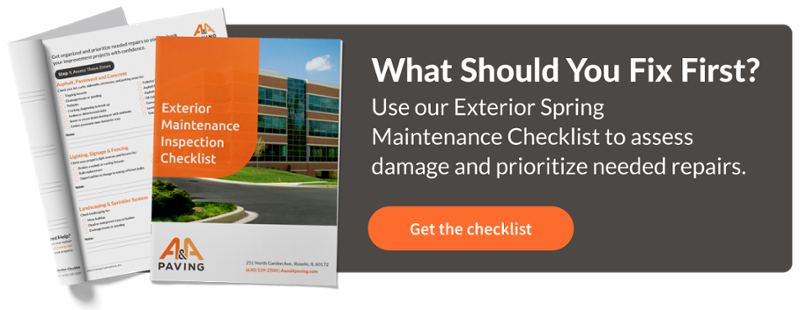One of the most frequently asked questions we hear from pavement owners who are trying to estimate their paving project is: How long will my new paving last? Given the investment, it’s understandable that customers would wonder about the lifespan of their pavement. To properly answer that question, we need to consider the type of paving work you’re considering having done in 2021 and the external factors that will affect your paving over its lifetime.
Types of Paving Projects
The type of work you have done will impact how long your pavement lasts. There are three basic types of paving jobs, each with its own life expectancy.
- Remove and Replace – Existing pavement is removed or milled down, hauled away and recycled, and then replaced with new hot mix asphalt. Life expectancy: 20+ years with regular maintenance.
- Mill and Resurface – Existing pavement is ground down to a specified depth. New hot-mix asphalt is re-installed. Life expectancy: 12-15 years with regular maintenance.
- Resurface – Existing pavement is left intact, but given a new surface coat of hot mix asphalt. Life expectancy: 12-15 years with regular maintenance.
Pro Tip: What do we mean by “regular maintenance?” See our section below on how to extend the life of your pavement!
Pavement Enemies: Water & Garbage Trucks
Traffic patterns and the types of vehicles traveling on your pavement (think garbage trucks and other heavy equipment) can take a toll on your pavement over time. You can try to minimize their impact by relocating garbage dumpsters or restricting the access of garbage trucks or construction equipment. But no matter what, your pavement will still see quite a bit of wear and tear.
As for water, it’s not necessarily water itself but the freeze and thaw cycle that happens in the average midwestern winter/spring that causes damage to your pavement. Talking to your landscaping contractor about watering and sprinkler runoff and working with them to develop a proper drainage plan can help control the amount of water that soaks into your pavement and seeps/sits underneath it.
Many parking lots out there are 30+ years old and were not engineered with proper drainage in mind. As a result, many of them broke down long before they should have. Today’s parking lots are engineered to meet codes for proper drainage and therefore can last many years longer. This is an instance where “they don’t build them like they used to” is actually a good thing.
Extending The Lifespan Of Your Pavement
Now that you know paving job types and the environmental factors that can impact your pavement, here are 4 things you can do to extend the life of your pavement and protect your investment:
1) Crack Filling
Crack filling is important because it seals the cracks and prevents water from getting into and under your asphalt. Crack filling is a minor fix, that if caught early, can keep you from needing more expensive work like patching or resurfacing. This is the ‘biggest bang for your buck’ when it comes to extending the life of your pavement. If you have a limited budget to protect your pavement, spend it here.
Pro Tip: Little cracks can’t wait. The longer you leave that little crack, the more you risk it turning into alligator cracking or a large pothole over the winter months. Repair early to save money.
2) Sealcoating
Sealcoating is recommended to protect the surface of your pavement.
It delivers many benefits:
- Extends life of your pavement
- Lowers repair costs
- Provides protection from oil, water, and other damaging liquids
- Helps snow and ice melt
- Raises curb appeal and property value
We recommend having your pavement sealed within 180 days of installation and re-applied as recommended by your contractor. On average, it should be applied every 1-3 years and is best done during the warmer months. That being said, NOW is the time to get in contact with your contractor to get on their schedule for your next sealcoat application in the spring.
3) Patching
Patching work is used to combat potholes. It’s the next level of deterioration beyond crack filling and sealcoating and is meant for bigger pavement problems. If you have a pothole of any size, you’ll need patching.
4) Regular Inspections
Regular inspections will uncover areas that show the early warning signs of a major problem – such as sinkholes by the catch basins or alligator cracking. Conduct regular inspections to catch damage early and keep your repair costs low.
Pro tip: When you have your landscaping contractor come out to assess your properties in the spring, consider asking your paving contractor to do the same.









